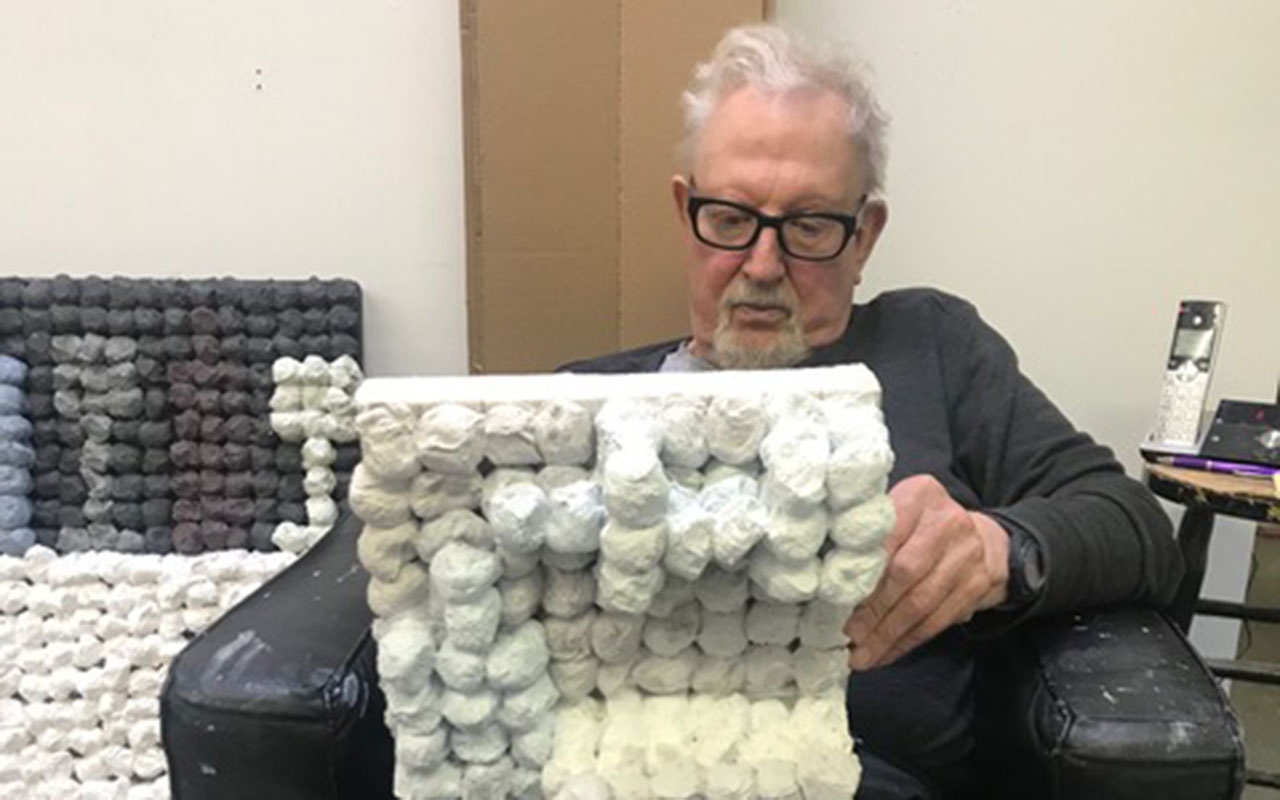
[ad_1]

Joe Zucker, who passed away on May 15 at age 83, once told me a story that I have repeated many times, often to students. In the late 1960s, shortly after he and Chuck Close became close friends, Close moved into the building where Joe had his studio. Soon after, he asked Joe to be one of the subjects of his monumental, black-and-white photorealistic portraits. Like the others in this group (Philip Glass, Mark Greenwold, and Richard Serra), the painting “Joe” (1969) was based on a clinical, mugshot-like photograph of Zucker taken by Close. According to the New York Times obituary for Close in August 2021, the paintings were “indistinguishable from photographs when seen in reproduction. When seen in person, they had a monumental, uncannily imposing presence. The giant, expressionless faces gaze back at viewers with vaguely discomfiting inscrutability. At a close distance, the paintings turn into landscape-like fields of facial details, with every hair, pore, wrinkle and blemish greatly magnified.”
Made during the late ‘60s, when Frank Stella’s “what you see is what you see” mantra dominated much of the art world’s thinking, Close upended this relationship by making paintings that changed depending on your viewpoint. Zucker, who possessed a smart, sardonic streak, decided that he would reroute the smooth flow from photograph to painting, raising another question: Would the painting still be telling the truth if Joe altered his appearance? Always thorough in his undertakings, Joe used hair tonic to slick back his hair. He put on a white shirt and tie, and stuffed wadded tissues into his cheeks. He said he wanted to look like a used car salesman, which he did.
Joe wasn’t just being flippant. He had a deep-seated need — at once intellectual and emotional — to push past all conventions, starting with painting itself. More than any other artist of his generation, Joe rejected the conventions associated with Abstract Expressionism, particularly its subjectivity. He was not interested in what Harold Rosenberg called “Action Painting” or Clement Greenberg’s insistence on flatness and paint-as-paint. He reached this understanding early in his career. When the gallerist John Corbett asked about his grid paintings, made between 1963 and ’68, he responded: “As an undergraduate I was paralyzed by having to paint a shape. Having been confronted by a blank canvas I had the epiphany that how a canvas was woven was really a solution to my problems, because it was referring to the canvas as an object, not as an illustration or illusion, but merely repeating its corporeal existence.” Joe recognized that clarifying painting’s corporeal existence was central to his project.
Zucker had a profound, innovative understanding that painting (like the changing human body) was a combination of form, content, and process, and that “truth to materials” could be expanded beyond art materials, such as oil paint and steel. He was guided by a highly analytical intelligence, a sharp sense of the absurd, and a refusal to settle into a signature style, material, or process. His imaginative transformations of materials such as cotton balls, sheetrock, pegboard, crates, woolen mittens, and gloves are unrivaled. His paintings could be both hilariously absurd and deadly serious. No one else has walked this tightrope with such precision and grace.
What elevates these works — they are not painting, sculpture, abstraction, figuration, or any hybrid — into their own inimitable domain is a combination of wild imagination and seriousness. He used cotton balls to make paintings of the antebellum South, reminding viewers that one of the roots of racism is American capitalism. These works also deflated the idea that there is such a thing as a “pure” painting. How could a painting be pure when it’s painted on cotton duck? It is a false ideal. In the scenes that Zucker chose to depict, segregation was obvious and violence often felt imminent. There is nothing traditional about this or other subjects that Zucker pursued with unparalleled rigor. For him, craft and art-making were inseparable, and the materials for both were available at the hardware store. He loved art, but not how it had become an exalted form. His engagement was visceral and intellectual, body and mind.
In 2013, he had an exhibition, Empire Descending A Staircase, at Mary Boone in Manhattan. The show’s title suggests the work was celebrating the centenary of the 1913 Armory show, specifically the debut of Marcel Duchamp’s painting “Nude Descending a Staircase, No. 2” (1912), while exposing the myth of America’s moral superiority. In order to address these two divergent subjects, which I cannot imagine anyone else doing, Joe scored a piece of sheetrock measuring either eight-by-two feet or four-by-four feet into a grid of quarter-inch squares. He then flaked off the protective paper, leaving the scored gypsum exposed in a grid that consisted of thousands of small but distinct sections and methodically applied one monochromatic dot of watercolor at a time, ranging from light gray to black. At first, it is not clear what Joe is painting. The dots hark to the cotton balls of the early weave paintings, an aggregation of units or cells, each similar and unique: Art as a living thing, not dead matter. It is only after prolonged looking that we see the columns and capitals holding nothing up. Our protections fall away.
Joe’s paintings were more than art-about-art. Using gypsum board, a staple of house building, he implicated us all. I will always love him for showing me that you could live in this world with humor and despair, and never lose sight of beauty and the joy of making something whose existence was not guaranteed.
Related
[ad_2]